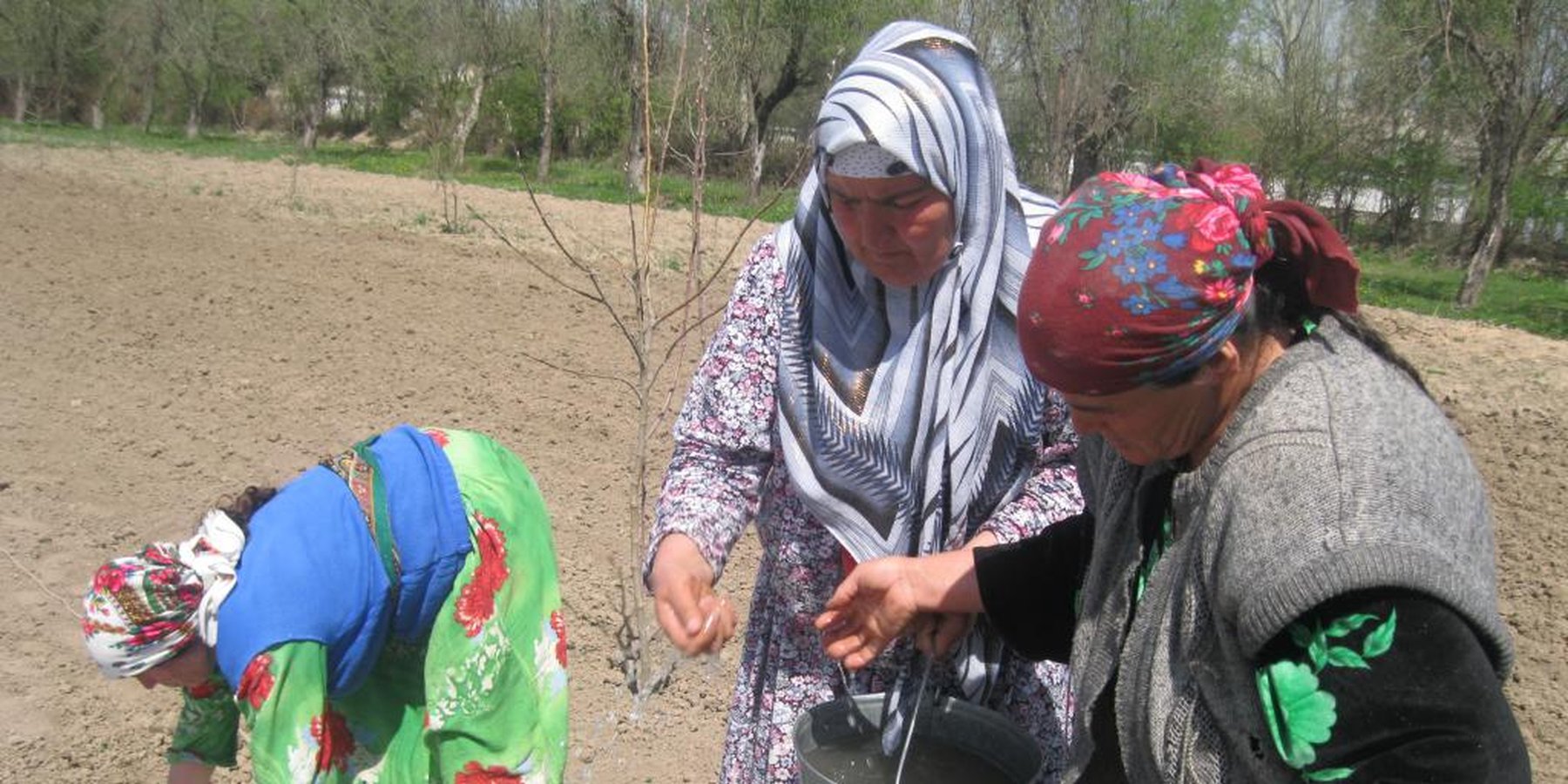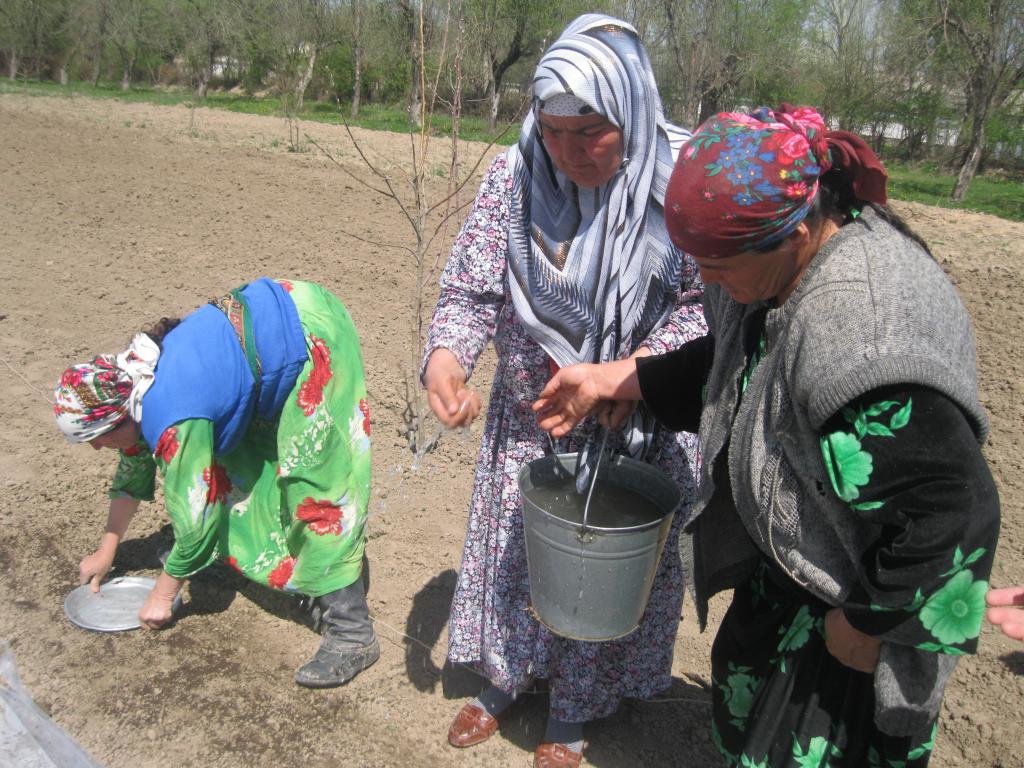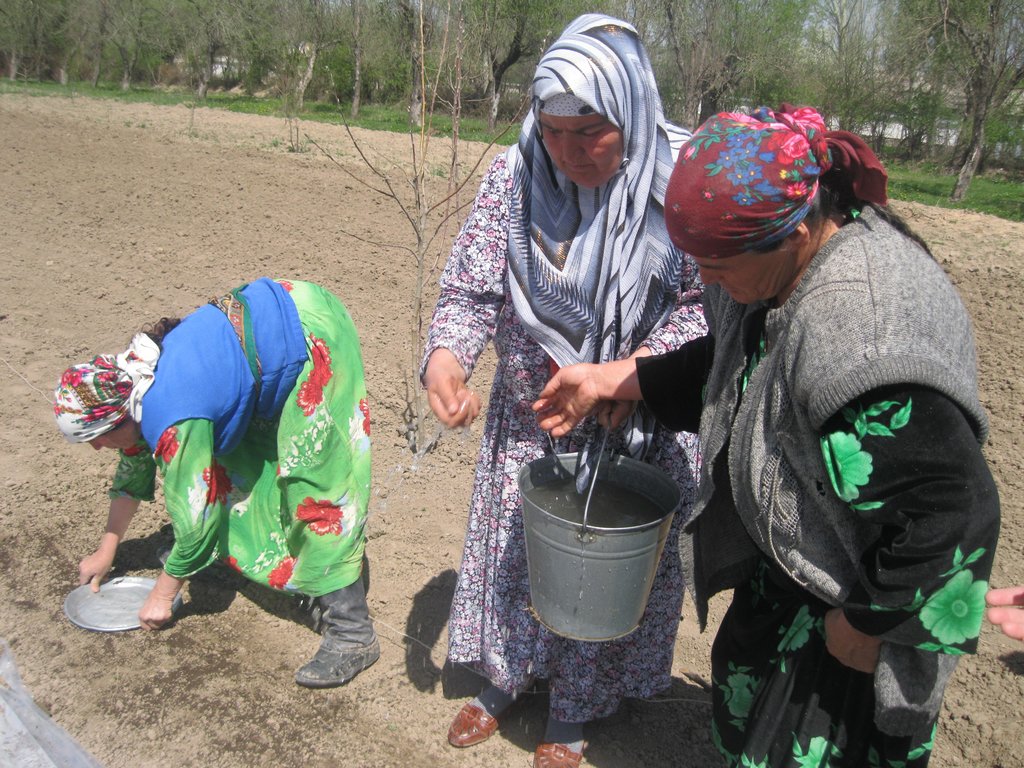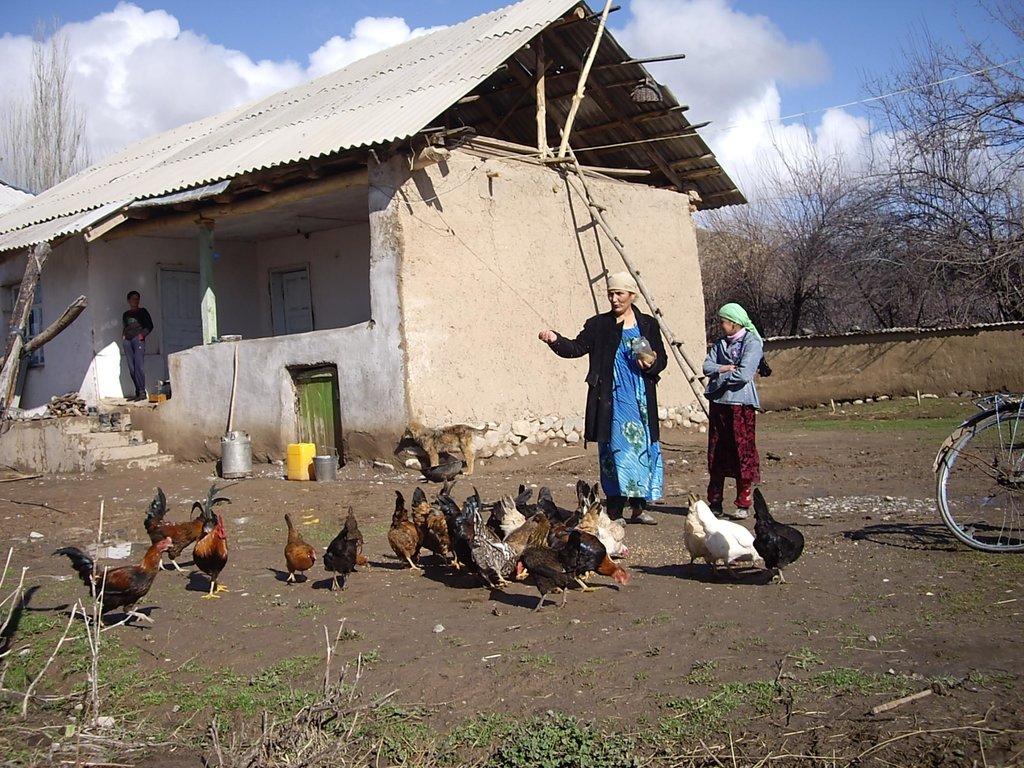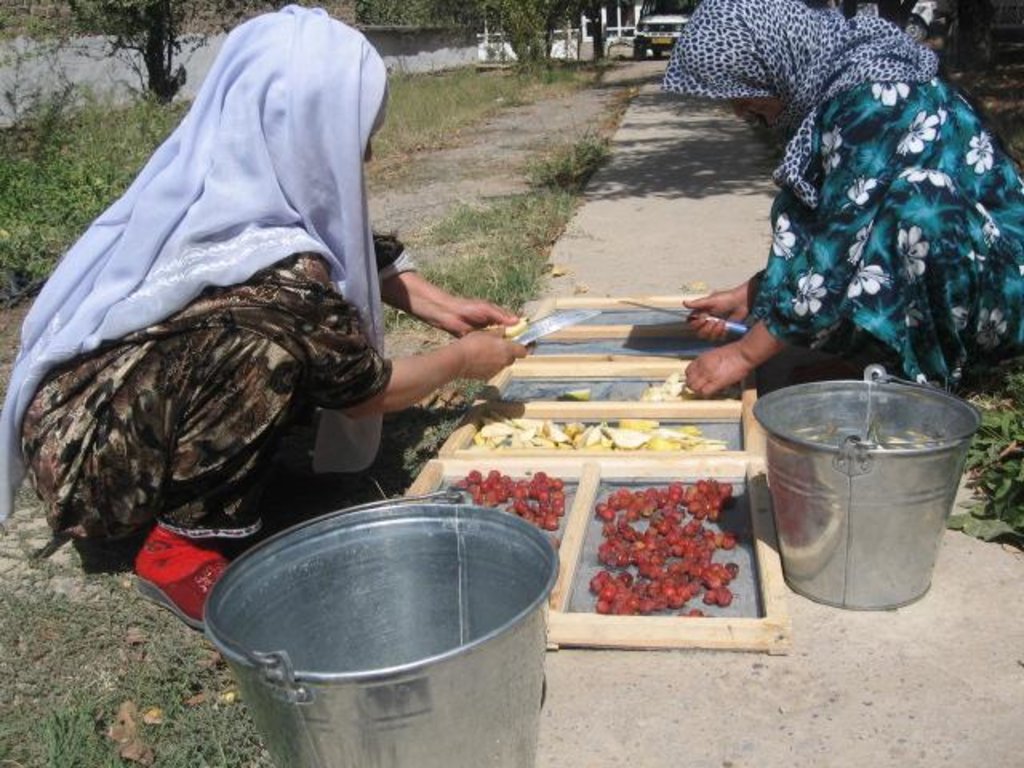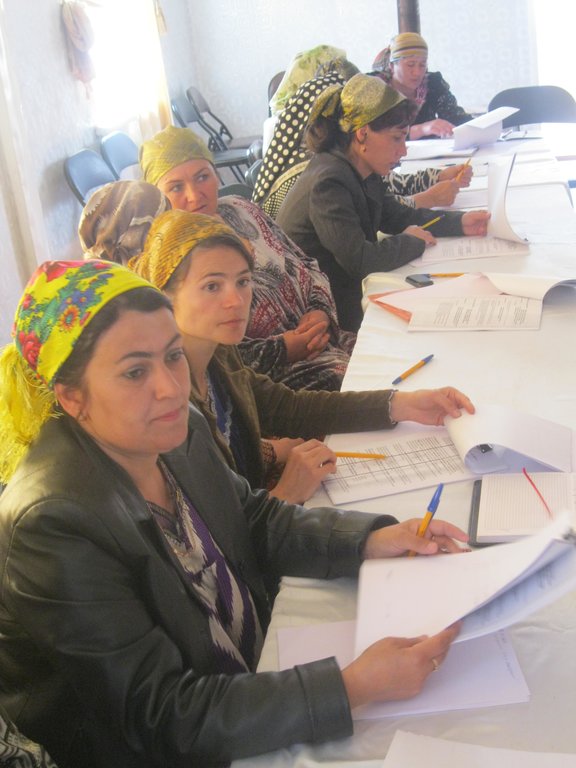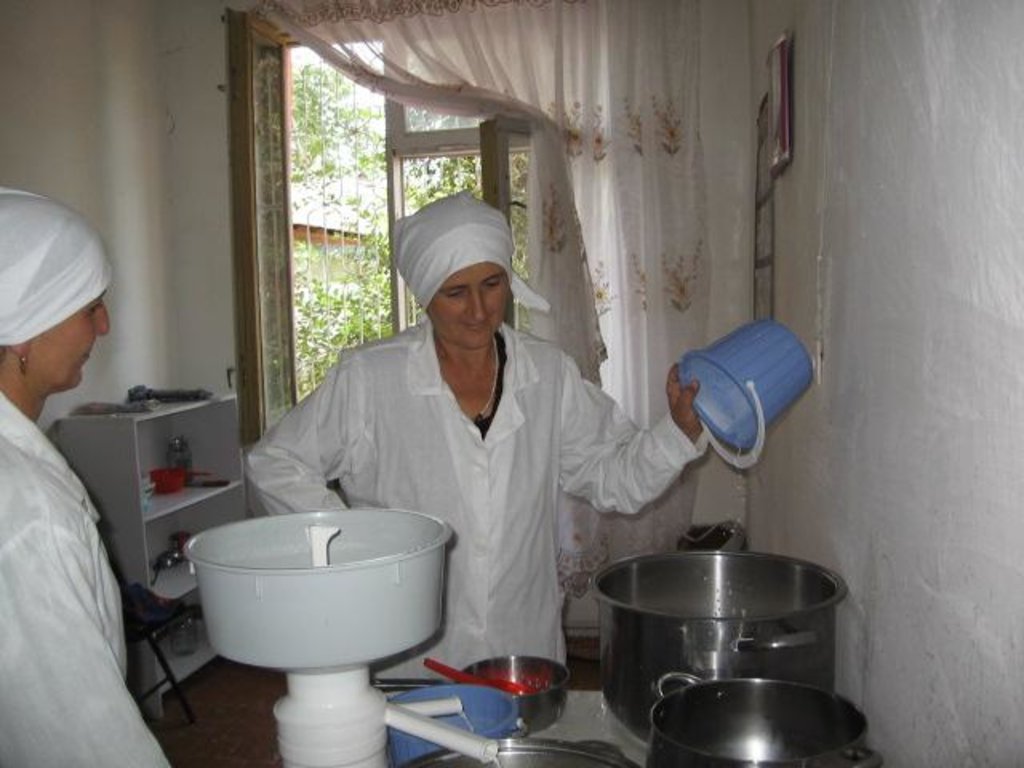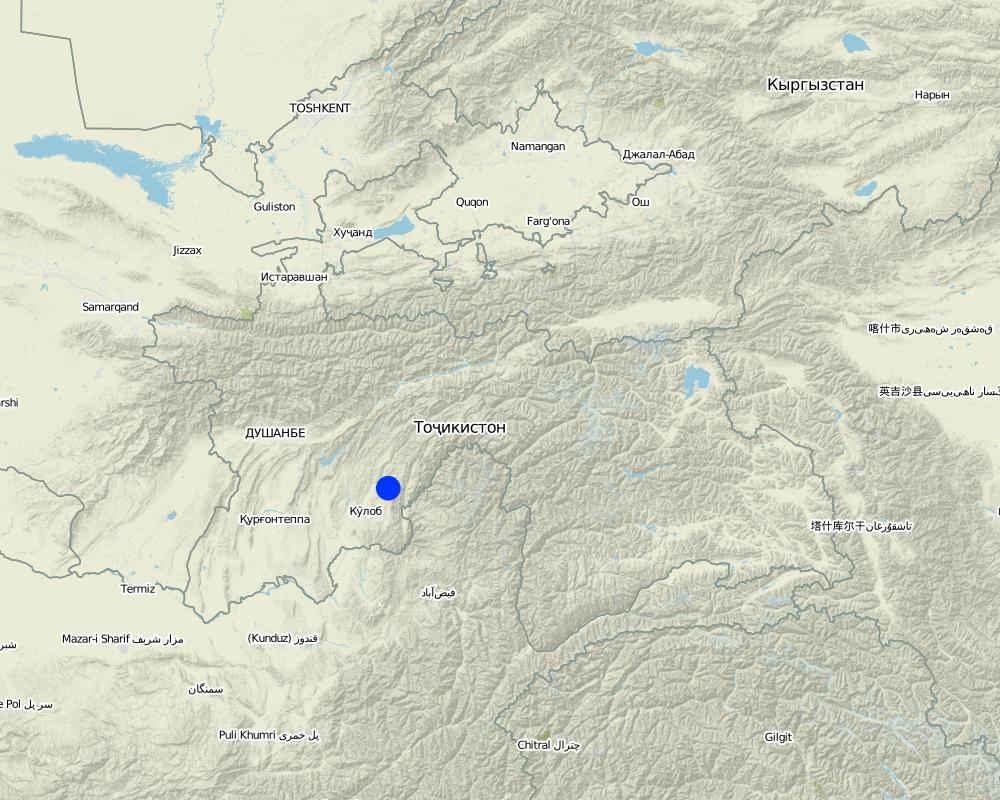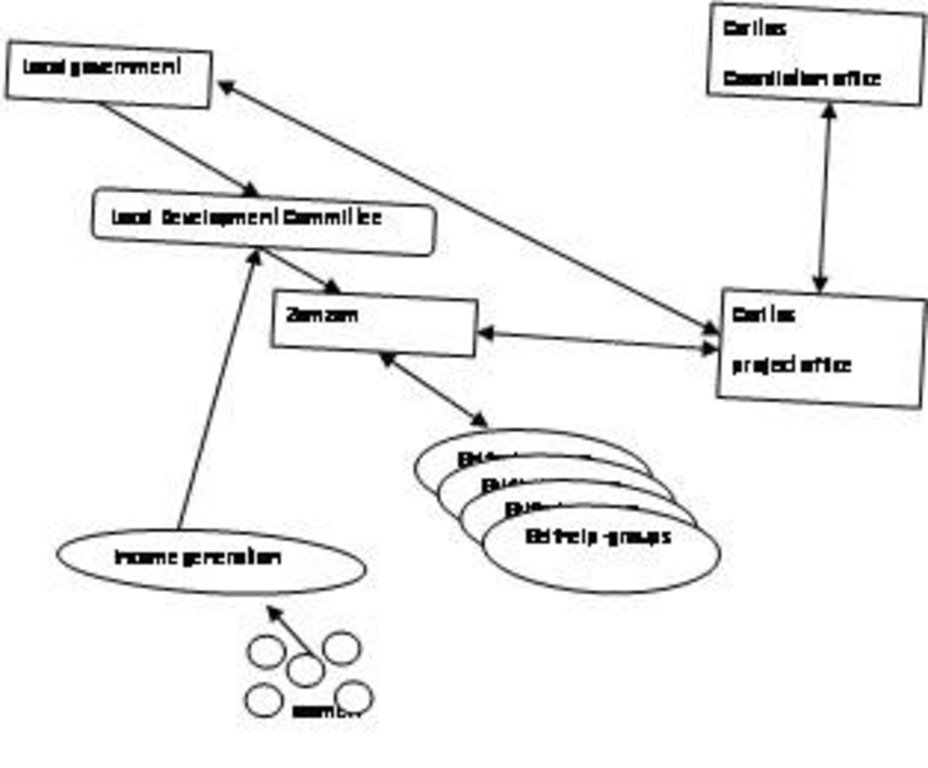Public Women's Organisation Zamzam - enhancing incomes for poor women through income generation activities [Tajikistan]
- Creation:
- Update:
- Compiler: Lisa Gampp
- Editor: –
- Reviewer: David Streiff
approaches_2438 - Tajikistan
- Full summary as PDF
- Full summary as PDF for print
- Full summary in the browser
- Full summary (unformatted)
- Public Women's Organisation Zamzam - enhancing incomes for poor women through income generation activities: July 6, 2017 (inactive)
- Public Women's Organisation Zamzam - enhancing incomes for poor women through income generation activities: Aug. 9, 2017 (inactive)
- Public Women's Organisation Zamzam - enhancing incomes for poor women through income generation activities: Nov. 2, 2021 (public)
View sections
Expand all Collapse all1. General information
1.2 Contact details of resource persons and institutions involved in the assessment and documentation of the Approach
SLM specialist:
SLM specialist:
Burkhanova Navzuna
mburkhaonva@caritas.ch
Caritas Switzerland in Tajikistan
Pavlova 20, Dushanbe
Tajikistan
Name of the institution(s) which facilitated the documentation/ evaluation of the Approach (if relevant)
CARITAS (Switzerland) - Switzerland1.3 Conditions regarding the use of data documented through WOCAT
The compiler and key resource person(s) accept the conditions regarding the use of data documented through WOCAT:
Yes
2. Description of the SLM Approach
2.1 Short description of the Approach
The development of a women's network to disseminate information, provide training, and provide support to other women in the community to help them improve their livelihoods, and provide a forum by which women's issues can be raised at a local level.
2.2 Detailed description of the Approach
Detailed description of the Approach:
Aims / objectives: The overriding objective of the creation of a women's group was to provide an approach, by which activities could be implemented to improve the livelihoods of women in this rural region. Women are considered a vulnerable group due to high rates of labour migration by many men to Russia. This leaves the women behind, to care for the children, tend the kitchen garden, rear animals and other duties that they have limited experience and training in completing. The creation of a women’s network was seen as an opportunity to unite women, and provide them with trainings, skills and livelihood opportunities so that they could improve not only their standard of living but also that of their families. Zamzam was also designed to act as a focal point for voicing women's issues with local representatives and local government, and to help raise the profile of women in the decision making process.
Methods: The organisation, Zamzam was set up initially with funding from an INGO, via a project, however to remain as a viable women’s network, they have several paid staff, secure funding through membership fees and sell dairy products on the local market. The core staff have received support from Caritas and Voluntary Services Overseas (VSO) on areas like business planning, organisational development and marketing to encourage autonomy and sustainability in the future as financial support is withdrawn. In addition Zam Zam members are taught technical skills in dairy production, energy efficiency, soil conservation, basic farming techniques etc which are then taken back to the respective communities and conveyed back to the women of the community. This network creates a safe environment for learning, discussing and planning using the most active women members as conduits for the transfer of information and ideas.
Stages of implementation: The establishment of Zamzam follows a basic business model, whereby a board of directors is established to oversee the daily running of the organisation, periodically meeting to discuss planning, finance, reporting, employment etc. This is supplemented by a bi-annual members meeting whereby all the members of Zamzam meet, and are provided with information on the network performance. This ensures that the members are fully briefed and that the operations remain transparent. This is also an opportunity to vote for new board members, suggest new directions, discuss membership fees, and provide feedback on implemented activities. Zamzam has also developed a business strategy and charter to provide guidelines and direction for its members.
Role of stakeholders: There are three main types of stakeholders; the first are the board and paid staff of the organisation, who oversee the day to day running, the second are the members who participate in training and income generating activities, and act as information points in their respective communites to the third set of stakeholders; the women who are not members but who can still benefit from improved knowledge and support.
2.3 Photos of the Approach
2.5 Country/ region/ locations where the Approach has been applied
Country:
Tajikistan
Region/ State/ Province:
Khatlon
Further specification of location:
Muminabod
Map
×2.6 Dates of initiation and termination of the Approach
Indicate year of initiation:
2008
Year of termination (if Approach is no longer applied):
2013
2.7 Type of Approach
- project/ programme based
2.8 Main aims/ objectives of the Approach
The Approach focused mainly on other activities than SLM (Increase income and assets of vulnerable women, and their families, and enhance participation of women at planning and helping to direct development by uniting women to reduce poverty)
To improve the sustainable livelihoods of women within the community by increasing their knowledge and providing opportunity for income generation (e.g. dairy production, crop production, food processing, poultry production). In addition, to establish a women’s network to share ideas and resources, and provide a viable platform by which the specific concerns of women can be raised and presented to local decision makers.
The SLM Approach addressed the following problems: To improve the sustainable livelihoods of women, one of the more vulnerable members of society. Increasingly since the collapse of the Soviet Union, the position of women within the community has become restricted. Previous social structures have diminished, and many male family members are working in Russia, taking with them their knowledge and labour skills. As a result women are left to bring up and support families, tend to the land and livestock and deal with day to day financial issues. This increased responsibility combined with a lack of knowledge, finance and experience has meant that the position of women in the community has become more exposed and subsequently vulnerable.
2.9 Conditions enabling or hindering implementation of the Technology/ Technologies applied under the Approach
social/ cultural/ religious norms and values
- hindering
There are large scale labour migration issues, leaving women with limited skill sets to run the family households. When the male members of the family return they resume their original tasks and the women resort to a more traditional roles.
Treatment through the SLM Approach: The women's organisation encourages and supports women in continuing with their new tasks and responsibilities.
availability/ access to financial resources and services
- hindering
Women have very little access to money, with many not having regular incomes or viability to access finance.
Treatment through the SLM Approach: Zamzam provides low cost training through outreach workers and materials and equipment for the implementation of improved livelihood measures.
institutional setting
- hindering
The women have a low level of education, which hinders activities such as planning, budgeting and implementation of activities.
Treatment through the SLM Approach: The key staff were provided with external support and training to aid staff development, this was supplemented with the development of an organisational strengthening plan for the first year.
legal framework (land tenure, land and water use rights)
- hindering
Zamzam needed to secure some sort of legal status to be able to strengthen and incorporate income generating activities.
Treatment through the SLM Approach: Zamzam registered as a legal entity.
knowledge about SLM, access to technical support
- hindering
The women did not have the technical knowledge to enhance the livelihoods of other women.
Treatment through the SLM Approach: Training was provided on key technical aspects such as energy and soil conservation by the project.
3. Participation and roles of stakeholders involved
3.1 Stakeholders involved in the Approach and their roles
- local land users/ local communities
The women of the Muminobod district.
It is a women's group designed to support women, therefore the involvement of men was peripheral.
The approach is targeted at women, this included women who have been abandoned by their husbands, and others who are now responsible for the household due to the fact that the male members of the family are working away in Russia. These women are considered to be a vulnerable group who need support, training, information to help themselves to improve their livelihoods.
- SLM specialists/ agricultural advisers
- local government
Local authorities
Local government in recognition of the group and involvement in the local development committee.
- international organization
Caritas Switzerland
Caritas built the capacity and supported the organisational development
3.2 Involvement of local land users/ local communities in the different phases of the Approach
| Involvement of local land users/ local communities | Specify who was involved and describe activities | |
|---|---|---|
| initiation/ motivation | passive | The creation of the initial concept was provided by an INGO, however, some more active women supported its conception. |
| planning | none | The planning of the network was undertaken by INGO staff and a few women representatives. |
| implementation | self-mobilization | Zamzam was established in response and the wishes of the local women to create a network to promote income generating activities. Caritas field office staff had the capacity and knowledge to provide technical advice to the self-help groups. |
| monitoring/ evaluation | interactive | Zamzam have to monitor and evaluate their own performance and provide information to donors who have supported them. |
| Research | passive | market specialists are responsible for the research in order to enhance the market potential of the products, to increase income. |
3.3 Flow chart (if available)
Description:
An overview of the organisational set up of Zamzam.
Author:
Caritas Switzerland (Dushanbe)
3.4 Decision-making on the selection of SLM Technology/ Technologies
Specify who decided on the selection of the Technology/ Technologies to be implemented:
- SLM specialists alone
Explain:
The project instigated the formation of the women's network.
Decisions on the method of implementing the SLM Technology were made by mainly by SLM specialists with consultation of land users
4. Technical support, capacity building, and knowledge management
4.1 Capacity building/ training
Was training provided to land users/ other stakeholders?
Yes
Specify who was trained:
- land users
- field staff/ advisers
Form of training:
- on-the-job
- courses
Subjects covered:
Proper care for cattle, milk collection, hygiene and sanitation in the milk sector, growing and collecting herbs, such as calendula, chamomile, etc
4.2 Advisory service
Do land users have access to an advisory service?
Yes
Specify whether advisory service is provided:
- on land users' fields
Describe/ comments:
Voluntary Services Overseas: Key elements: Training on marketing and business planning, Training on dairy production.; VSO supported Zamzam by providing international volunteers to help support their activities, and provide training and advisory services.
Advisory service is quite adequate to ensure the continuation of land conservation activities; Zamzam learnt much from the VSO support provided, and is now in a position to further help other networks.
4.3 Institution strengthening (organizational development)
Have institutions been established or strengthened through the Approach?
- yes, moderately
Specify the level(s) at which institutions have been strengthened or established:
- local
Specify type of support:
- capacity building/ training
Give further details:
NGO Zamzam hired a local training institution ATAC in Kulob to train Zamzam’s members on various topics related to agriculture.
4.4 Monitoring and evaluation
Is monitoring and evaluation part of the Approach?
Yes
Comments:
economic / production aspects were ad hoc monitored by project staff through observations; indicators: None
no. of land users involved aspects were regular monitored by project staff through measurements; indicators: None
management of Approach aspects were ad hoc monitored by project staff through observations; indicators: None
There were few changes in the Approach as a result of monitoring and evaluation: Since there was no market to sell certain items, Zamzam changed their focus and started investigating other products that the women could produce, and provide a respectable return on their invested time and effort. Zamzam consulted market specialists as part of this process.
There were few changes in the Technology as a result of monitoring and evaluation: Instead of focusing on dried fruits they refocused their efforts on medicinal herbs as a result of the market research.
4.5 Research
Was research part of the Approach?
Yes
Specify topics:
- economics / marketing
5. Financing and external material support
5.1 Annual budget for the SLM component of the Approach
If precise annual budget is not known, indicate range:
- 100,000-1,000,000
Comments (e.g. main sources of funding/ major donors):
Approach costs were met by the following donors: international (Caritas Switzerland, Miserior, Oxfam Novib): 100.0%
5.2 Financial/ material support provided to land users
Did land users receive financial/ material support for implementing the Technology/ Technologies?
Yes
If yes, specify type(s) of support, conditions, and provider(s):
Some equipment was provided such as milk processing and energy efficiency equipment which was provided by INGO, Caritas Switzerland.
5.3 Subsidies for specific inputs (including labour)
- equipment
| Specify which inputs were subsidised | To which extent | Specify subsidies |
|---|---|---|
| milk processing equipment and tools | partly financed | |
- agricultural
| Specify which inputs were subsidised | To which extent | Specify subsidies |
|---|---|---|
| seeds | partly financed | |
| fertilizers | fully financed | |
| pesticides | fully financed | |
- construction
| Specify which inputs were subsidised | To which extent | Specify subsidies |
|---|---|---|
| wood | partly financed | wood and materials to repair the office |
If labour by land users was a substantial input, was it:
- voluntary
Comments:
Several of the project activities were financed by INGO's.
5.4 Credit
Was credit provided under the Approach for SLM activities?
No
6. Impact analysis and concluding statements
6.1 Impacts of the Approach
Did the Approach help land users to implement and maintain SLM Technologies?
- No
- Yes, little
- Yes, moderately
- Yes, greatly
The members were provided with training on energy efficiency measures, soil and water conservation and improved agricultural techniques to improve their land management skills.
Did the Approach empower socially and economically disadvantaged groups?
- No
- Yes, little
- Yes, moderately
- Yes, greatly
Poor and vulnerable women were given a voice and an income generating activity.
Did other land users / projects adopt the Approach?
- No
- Yes, little
- Yes, moderately
- Yes, greatly
So far there was an exchange of knowledge and ideas, but the women's network approach is to be adopted in other regions.
Did the Approach lead to improved livelihoods / human well-being?
- No
- Yes, little
- Yes, moderately
- Yes, greatly
150l of milk is now processed on a daily basis, and there were significant reductions in the organic material used for fuel purposes.
Did the Approach help to alleviate poverty?
- No
- Yes, little
- Yes, moderately
- Yes, greatly
Due to the income generation activities women were able to start setting up their own small businesses and therefore were able to generate their own income by selling their milk or other products.
6.2 Main motivation of land users to implement SLM
- increased production
milk, dried fruits etc
- increased profit(ability), improved cost-benefit-ratio
A variety of dairy products have a higher return than just milk.
- prestige, social pressure/ social cohesion
as more women joined it became socially acceptable to join the network.
- affiliation to movement/ project/ group/ networks
- well-being and livelihoods improvement
women could see the benefits within the community and other households.
6.3 Sustainability of Approach activities
Can the land users sustain what has been implemented through the Approach (without external support)?
- yes
If yes, describe how:
All the members pay a membership fee for a certain amount of time. This money is used to enable to buy the administrative things needed. Additionally, selling things at market gives them extra income.
6.4 Strengths/ advantages of the Approach
| Strengths/ advantages/ opportunities in the land user’s view |
|---|
| Through this organisation it was possible to reduce poverty and increase the income of women (How to sustain/ enhance this strength: Continued support and training for the leaders of the organisation, to improve their capacity and ability.) |
| Each sector includes experienced specialists (How to sustain/ enhance this strength: Diversification of specialists will help the organisation develop different practices and income streams to help their members.) |
| NGO Zamzam has lots of experience working with milk and dairy products (How to sustain/ enhance this strength: It can be enhanced through support of the Government to provide an adequate environment, such as drinking water and electricity supply, appropriate building and area, legislative documents, collaboration with tax agencies, etc. Besides, the financial support from governmental and non-governmental sources, Zamzam has to improve its fund raising and financial management skills) |
| NGO Zamzam has developed extensive experience in mobilising local women (How to sustain/ enhance this strength: Zamzam has to ensure that members continue to contribute to the running costs of the organisation.) |
| Strengths/ advantages/ opportunities in the compiler’s or other key resource person’s view |
|---|
| The approach is inclusive of a pre selected vulnerable group of the community. (How to sustain/ enhance this strength: The approach could be replicated in other districts, this could then involve cross visits and further lobbying potential.) |
| The approach is developed for long term sustainability and can be used to implement a variety of different projects and schemes. (How to sustain/ enhance this strength: This mechanism can be used to select and implement different SLM technologies benefiting a vulnerable sector of society.) |
| The approach is market based and provides invaluable commercial skills to the members. (How to sustain/ enhance this strength: New markets, products and places to sell will make the organisation even more successful and sustainable and at the same time generate income for women) |
6.5 Weaknesses/ disadvantages of the Approach and ways of overcoming them
| Weaknesses/ disadvantages/ risks in the land user’s view | How can they be overcome? |
|---|---|
| The management members of the organisation are unskilled and mostly uneducated. Therefore, it takes lots of effort to train them | More training will be conducted and they will learn by doing |
| Weaknesses/ disadvantages/ risks in the compiler’s or other key resource person’s view | How can they be overcome? |
|---|---|
| So far the organisation still depends on external finance, training and support. | Training on securing funds and generating income from the sale of services and products. |
| The lack of market capacity and the small area where the products can be sold. | There are already plans to extend the distribution area to make Zamzam a brand and therefore more able to sell products in Dushanbe or other regions. |
7. References and links
7.1 Methods/ sources of information
- field visits, field surveys
- interviews with land users
7.2 References to available publications
Title, author, year, ISBN:
Project Proposal Zamzam 2010-1013: Tajikistan/Pamir mountains: Enhancing Incomes for poor Women, Nicole Scholz, 2010
Available from where? Costs?
Caritas Switzerland in Tajikistan, Pavlova Street 20, Dushanbe
Links and modules
Expand all Collapse allLinks
No links
Modules
No modules


